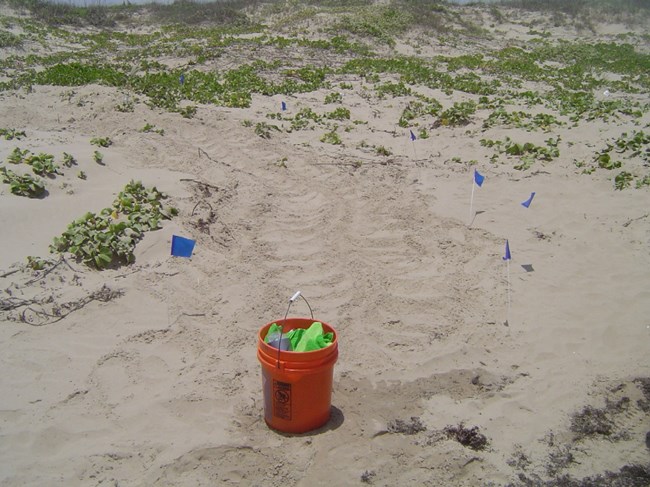
NPS Photo. Park staff with the Sea Turtle Science and Recovery program have made observations and reported on several Texas “firsts” at Padre Island National Seashore. They have documented the first green sea turtle nest along the Texas coast (although historic nesting has been suspected) in 1987 and the first hawksbill sea turtle nest in Texas in 1998 (Shaver and Amos 1988, Shaver 1989, Shaver and Frandsen 2019). Also, a leatherback sea turtle nest was reported in 2008 for the first time in Texas since the 1920s and 1930s (Shaver et al. 2019). In 1991, Kemp’s ridley sea turtles were documented for the first time within the inshore waters of Willacy County (including the Mansfield Channel and lower Laguna Madre) and a pair of turtles was observed mating (Shaver 1992). Literature Cited:Purvin, C.M., M.R. Villalba-Guerra, H.R. Frandsen, and D.J. Shaver. 2020. Chelonia mydas (green sea turtle). Incidental capture. Herpetological Review. 51(2):311–312. |
Last updated: February 18, 2025
